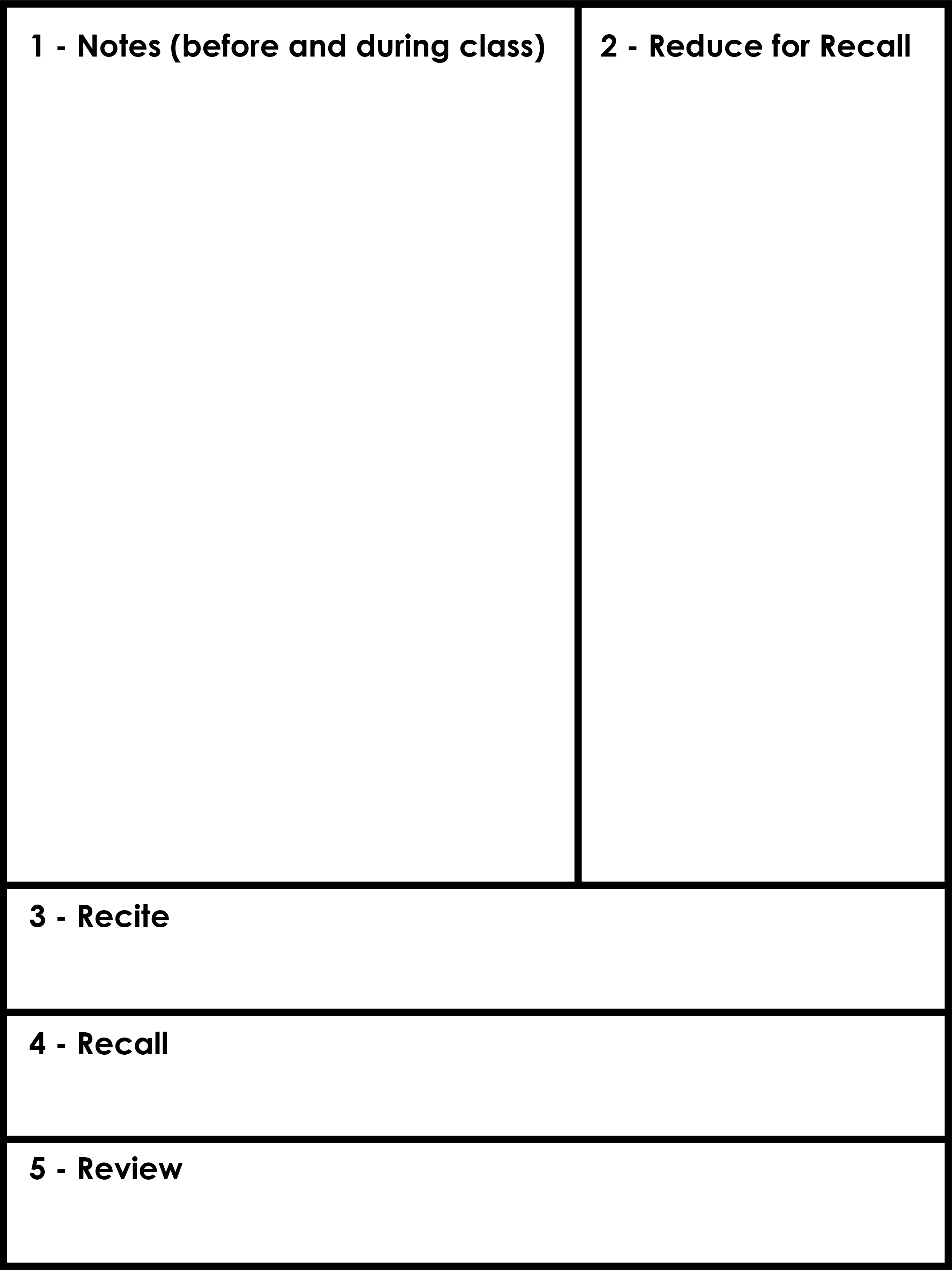16 Take Notes from Lectures – That You’ll Actually Use
You’ve got the PowerPoint slides for your lecture, and the information in your textbook. Do you need to take notes as well?
Despite the vast amount of information available in electronic formats, taking notes is an important learning strategy. In addition, the way that you take notes matters, and not all notetaking strategies lead to equal results. By considering your notetaking strategies carefully, you will be able to create a set of notes that will help retain the most important concepts from lectures and tests, and that will assist you in your exam preparation.
Two Purposes for Taking Notes
People take notes for two main reasons:
1. To keep a record of the information they heard. This is also called the external storage function of notetaking.
2. To facilitate learning material they are currently studying.
The availability of information on the internet may reduce the importance of the external storage function of notetaking. When the information is available online, it may seem logical to stop taking notes. However, by neglecting to take notes, you lose the benefits of notetaking as a learning tool.
How Notetaking Supports Learning
Taking notes during class supports your learning in several important ways:
- Taking notes helps you to focus your attention and avoid distractions.
- As you take notes in class, you will be engaging your mind in identifying and organizing the main ideas. Rather than passively listening, you will be doing the work of active learning while in class, making the most of your time.
- Creating good notes means that you will have a record for later review. Reviewing a set of condensed and well-organized notes is more efficient than re-reading longer texts and articles.
Effective Notetaking Strategies

While taking notes is helpful, not all notetaking strategies are equally beneficial. Many students try to write down everything the instructor is saying – this is especially true for students who take notes with laptops. Unfortunately, this strategy does not help you to engage in critical thinking and to identify important concepts.
When taking notes in class, focus on writing down key concepts, rather than recording all of the instructor’s words. For many students, this may be a good reason to take notes by hand, rather than with a laptop. In some studies, students who have taken notes by hand have outperformed those taking notes with a laptop on tests. Taking notes by hand also allows you to avoid distracting yourself and others with websites, e-mail, or online chatting during class time.[1]
Rather than taking word-for-word notes, consider writing an outline of the lecture’s most important points and how they fit together. Additionally, watch for other information that your instructor emphasizes, either verbally or with gestures, and add these key concepts to your notes. Leave a wide margin on one side of the page to write down key words and questions after the lecture. At the bottom of each page of notes, leave room to write a short summary of the information on that page. Your page layout might look something like the image on this page.
Use Your Notes to Study
Now that you have created a set of notes from lectures and readings, how do you get the most benefit from them?
If you have been following the methods described in this chapter, your notes will include questions that you have answered by reading or listening. Rather than simply re-reading notes, which is less effective, you will benefit most if you use your notes as a self-study tool. [2]
- Read the question in your notes out loud. Cover the answer with a sheet of paper.
- Recite the answer out loud as best as you are able, or jot it down on a piece of paper.
- Compare your answer with what you have in your notes. If you are correct, move on to the next question. If you have difficulty with a question, review the related material in your notes again. You may wish to use a sticky note or flag to mark questions you need to review again.
As you take good notes, you will strengthen your learning skills as you become more proficient at identifying key information from lectures and texts. By including study questions in your notes as you take them, you will turn your notes into a powerful tool for later review and exam preparation.
Try it!
Don’t just take notes, make notes. This week, try to practice at least one note taking strategy you learned from this chapter. Use the questions you created to review and test yourself throughout the week. How does this method compare with re-reading your notes?
- Oppenheimer, D. (2017, January). On noteworthy notes: Not all note taking is created equal. Webinar presented at the Learning Specialists Association of Canada. Retrieved from https://lsac.wildapricot.org/page-18154 ↵ ↵
- Dunlosky, J., Rawson, K. A., Marsh, E. J., Nathan, M. J., & Willingham, D. T. (2013). Improving students’ learning with effective learning techniques: Promising directions from cognitive and educational psychology. Psychological Science in the Public Interest, 14(1), 4–58. https://doi.org/10.1177/1529100612453266 ↵

